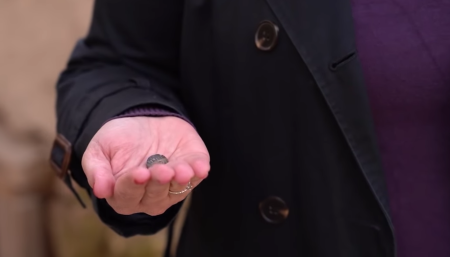Archaeological discovery: Small seal mentioning King Josiah court official mentioned in Bible found in Israel

A tiny clay impression from the 8th century BC, which bears an inscription mentioning a member of the court of the biblical King Josiah, was recently located in the City of David in Jerusalem.
Excavations held at the Givati Parking Lot in the City of David uncovered a tiny clay impression, also known as a bulla, that included a reference to Nathan-Melech, who was identified as “Servant of the King.”
The biblical Nathan-Melech is mentioned in 2 Kings 23:11: “He removed from the entrance to the temple of the LORD the horses that the kings of Judah had dedicated to the sun. They were in the court near the room of an official named Nathan-Melek. Josiah then burned the chariots dedicated to the sun.”
Dr. Anat Mendel-Geberovich of the Hebrew University of Jerusalem and the Center for the Study of Ancient Jerusalem told The Jerusalem Post on Sunday that it is likely a reference to the biblical figure.
“Although it is not possible to determine with complete certainty that the Nathan-Melech who is mentioned in the Bible was in fact the owner of the stamp, it is impossible to ignore some of the details that link them together,” explained Mendel-Geberovich to the Middle Eastern news outlet.
The recent find represented the first archaeological evidence for the biblical figure of Nathan-Melek, according to the Times of Israel.
Archaeologist Dr. Yiftah Shalev of the Israel Antiquities Authority explained to the Times that the two inscriptions on the bulla “paint a much larger picture of the era in Jerusalem.”
“What is important is not just that they were found in Jerusalem, but [that they were found] inside their true archaeological context,” explained Shalev.
“It is not a coincidence that the seal and the seal impression are found here.”
The bulla will be presented along with another artifact in the Israel Exploration Journal.





















